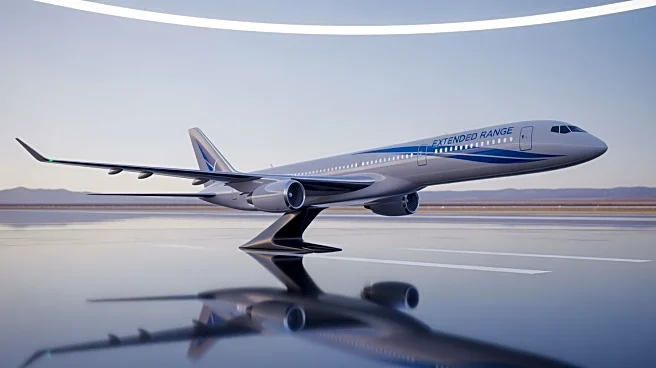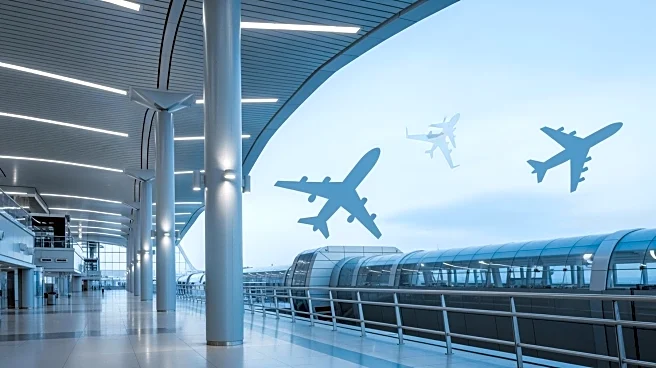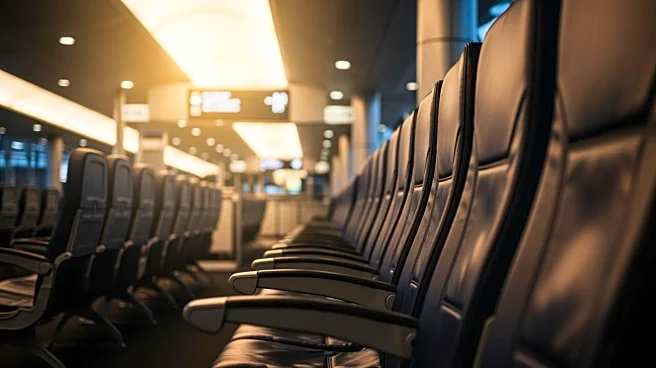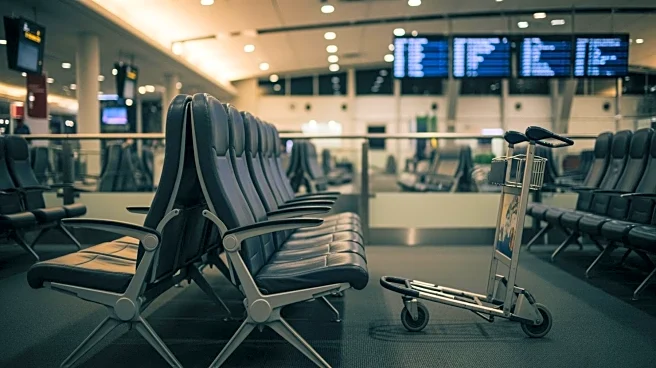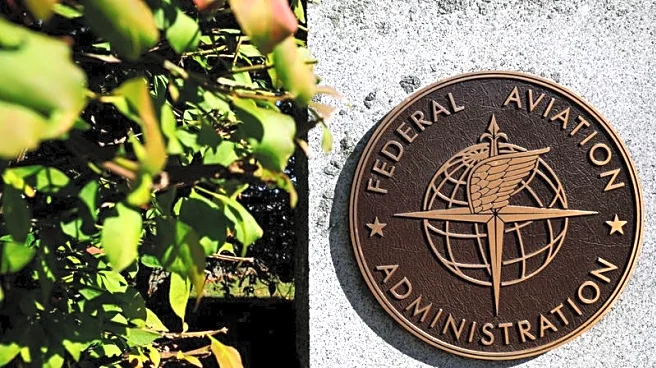What's Happening?
American Airlines has taken delivery of its first Airbus A321XLR aircraft, marking a significant milestone as the first U.S. carrier to receive this model. The A321XLR, known for its extended range capabilities,
is expected to open new long-haul routes that were previously unfeasible with narrow-body jets. Initially ordered in 2019, American planned to receive these aircraft starting in 2023, but delays in certification and supply chain issues postponed the timeline. The first aircraft, delivered in July 2025, was stored in the Czech Republic due to interior fitting delays. However, the aircraft is now en route to the United States, specifically to Dallas, indicating progress in its readiness for service. American has ordered a total of 50 A321XLRs, which will feature a three-cabin layout including business, premium economy, and economy classes.
Why It's Important?
The introduction of the Airbus A321XLR to American Airlines' fleet is poised to significantly impact the airline's operational strategy and competitive positioning. With its extended range, the A321XLR allows American to explore new international routes that were previously not viable with existing aircraft. This could lead to increased market share in transatlantic travel, particularly from key hubs like New York and Philadelphia. The aircraft's premium cabin configuration is expected to enhance passenger experience, potentially attracting more business travelers. Additionally, the A321XLR's fuel efficiency aligns with industry trends towards more sustainable aviation practices, offering cost savings and environmental benefits. The successful integration of these aircraft could set a precedent for other U.S. carriers considering similar fleet upgrades.
What's Next?
American Airlines plans to debut the A321XLR in commercial service by early 2026. The initial deployment will focus on premium transcontinental routes, replacing the current A321T subfleet. As more aircraft are delivered, American is expected to expand its use to international routes, particularly targeting long and thin markets in Europe. The airline's strategy includes reconfiguring existing aircraft and utilizing larger planes like the Boeing 777 temporarily. Stakeholders, including passengers and industry analysts, will be watching closely to see how American leverages the A321XLR's capabilities to enhance its route network and service offerings.
